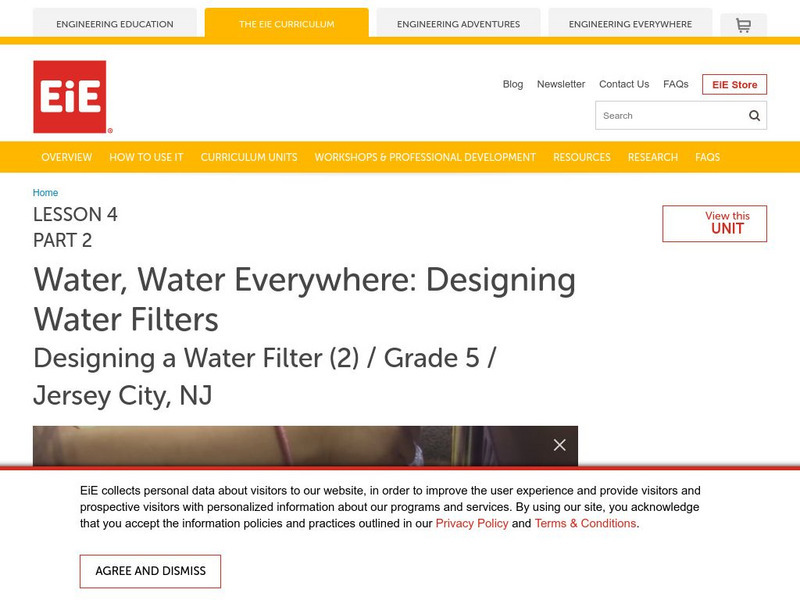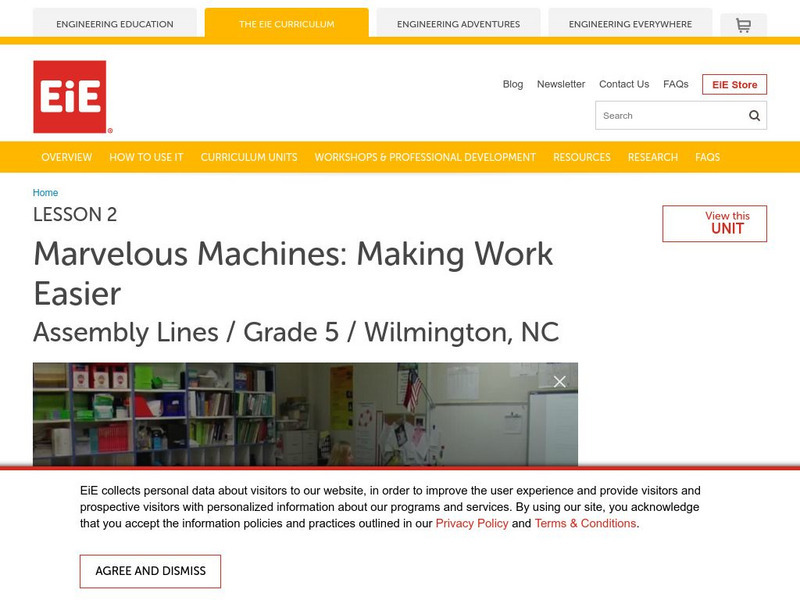Museum of Science
Eie: Engineering Is Elementary: Designing a Windmill
Students focus on the mechanical engineering problem of capturing wind energy to do work as they imagine, plan, create, test, and improve their own windmills.
Museum of Science
Eie: Engineering Is Elementary: A Magnetic Personality
Students engage in several experiments to learn more about the properties of magnets.
Museum of Science
Ei E: Catching the Wind: Designing Windmills Lesson 3 Part 1
Students predict, test, observe, and describe how sails made of different materials and shapes catch the wind. [10:10]
Museum of Science
Ei E: Catching the Wind: Designing Windmills Lesson 1
A storybook introduces the engineering challenge and context. In this story, Leif, a boy from Denmark, learns about mechanical engineering as he designs his own windmill. [13:38]
Museum of Science
Ei E: Catching the Wind: Designing Windmills Lesson 3 Part 2
Students predict, test, observe, and describe how sails made of different materials and shapes catch the wind. [14:11]
Museum of Science
Ei E: Catching the Wind: Designing Windmills Lesson 3 Part 1
Students predict, test, observe, and describe how sails made of different materials and shapes catch the wind. [7:01]
Museum of Science
Ei E: Catching the Wind: Designing Windmills Lesson 2
Students think like mechanical engineers as they observe and analyze the moving parts of common machines. [13:23]
Museum of Science
Ei E: Catching the Wind: Designing Windmills Lesson 1
A storybook introduces the engineering challenge and context. In this story, Leif, a boy from Denmark, learns about mechanical engineering as he designs his own windmill. [12:42]
Museum of Science
Ei E: Designing a Water Filter (2)
Students focus on the environmental engineering problem of providing clean water as they imagine, plan, create, test, and improve their own water filters.
Museum of Science
Ei E: Designing a Water Filter (1)
Students focus on the environmental engineering problem of providing clean water as they imagine, plan, create, test, and improve their own water filters.
Museum of Science
Ei E: Water, Water Everywhere: Designing Water Filters Lesson 3
Students test a variety of filter materials to see how well they remove particles and color from contaminated water. [10:26]
Museum of Science
Ei E: Water, Water Everywhere: Designing Water Filters Lesson 2
Students think like environmental engineers as they review a mural of a small American community, noting possible sources of pollution and suggesting ways to clean up or eliminate the source of the pollution. [11:08]
Museum of Science
Ei E: Water, Water Everywhere: Designing Water Filters Lesson 1
A storybook introduces the engineering challenge and context. In this story, Salila, a girl from India, learns about environmental engineering as she designs her own water filter. [15:34]
Museum of Science
Ei E: Marvelous Machines: Making Work Easier Lesson 4 Part 2
Students apply their knowledge of simple machines and industrial engineering as they imagine, plan, create, test, and improve their own factory subsystems. [13:01]
Museum of Science
Ei E: Marvelous Machines: Making Work Easier Lesson 4 Part 1
Students apply their knowledge of simple machines and industrial engineering as they imagine, plan, create, test, and improve their own factory subsystems. [10:41]
Museum of Science
Ei E: Marvelous Machines: Making Work Easier Lesson 3 Part 2
Students use simple machines and spring scales to determine how much force is needed to move a standard load and think about the ergonomics of using each machine. [11:25]
Museum of Science
Ei E: Marvelous Machines: Making Work Easier Lesson 3 Part 1
Students use simple machines and spring scales to determine how much force is needed to move a standard load and think about the ergonomics of using each machine. [9:59]
Museum of Science
Ei E: Marvelous Machines: Making Work Easier Lesson 1
A storybook introduces the engineering challenge and context. In this story, Aisha, a girl from Boston, Massachusetts, learns about industrial engineering as she designs her own factory subsystem. [10:22]
Museum of Science
Ei E: Marvelous Machines: Making Work Easier Lesson 4
Students apply their knowledge of simple machines and industrial engineering as they imagine, plan, create, test, and improve their own factory subsystems. [15:25]
Museum of Science
Ei E: Marvelous Machines: Making Work Easier Lesson 3 Part 3
Students use simple machines and spring scales to determine how much force is needed to move a standard load and think about the ergonomics of using each machine. [12:49]
Museum of Science
Ei E: Marvelous Machines: Making Work Easier Lesson 3 Part 2
Students use simple machines and spring scales to determine how much force is needed to move a standard load and think about the ergonomics of using each machine. [8:41]
Museum of Science
Ei E: Marvelous Machines: Making Work Easier Lesson 3 Part 1
Students use simple machines and spring scales to determine how much force is needed to move a standard load and think about the ergonomics of using each machine. [15:28]
Museum of Science
Ei E: Assembly Lines
Students think like industrial engineers as they compare the advantages and disadvantages of making a product independently with making a product in an assembly line.
Museum of Science
Ei E: Marvelous Machines: Making Work Easier Lesson 1
A storybook introduces the engineering challenge and context. In this story, Aisha, a girl from Boston, Massachusetts, learns about industrial engineering as she designs her own factory subsystem. [9:37]




